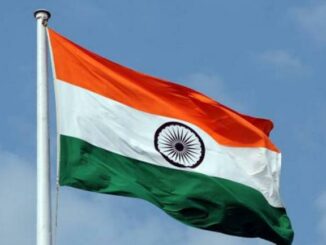
It is the right time to recognize the gravity of problems such as unemployment, inequality of income and wealth, and environmental degradation
“Unfortunately, the country has no employment policy in place. The youth unemployment is alarming at 22.84 per cent at the country level, but in certain states like Punjab and Kerala, it was nearing 30 per cent in 2022. This is why the youth of this country are racing to immigrate, even to conflict zones like eastern Europe and West Asia. Without providing employment to youth, the country cannot take advantage of the demographic dividend of the young population.”

Constraints on India’s growth trajectory are not allowing its economic potential to be fully realized. Consequently, the economy has been recording growth rates much below the potential rate for a period spanning more than a decade since 2011-12, excluding the Covid years (2020-21 and 2021-22).
In the first half of the 20th century, the gross domestic product (GDP) of India grew at a rate of around 1 per cent, which was matched by the growth rate of the population, keeping the per capita income constant and very low. For three decades (1950-51 to 1980-81), the GDP grew at an average annual rate of 3.5 per cent, while the population grew at an annual rate of 2 per cent or more, marking slow growth in the per capita income. But the 1980s observed a jump in the annual GDP growth rate from 3.5 per cent to 5.5 per cent, recording a period of accelerated growth rate. The 1990s brought a breakthrough in the form of economic reforms that unlocked the growth potential. The economy recorded a growth rate of 8 per cent or above for nearly eight years between 2003-04 and 2010-11.
The high growth trajectory prompted several economists to work out the potential growth rate of the economy. Dani Rodrik and Arvind Subramanian (2004) projected a potential growth rate of above 7 per cent up to 2025. Tushar Poddar and Eva Yi (2007) predicted a potential growth rate of above 8 per cent until 2020. C Rangarajan and DK Srivastava (2017) estimated it to be 8 per cent to 8.1 per cent up to 2029-30. These estimates indicate that the Indian economy has the potential to grow by around 8 per cent for the medium and the long period. But this potential growth rate could be achieved for only eight years between 2003 and 2010-11.
Although the government claims that India can become a $25-trillion economy by 2047, it seems to ignore the fact that the economy continues to perform below its potential level. This is why efforts have not been made to identify the reasons behind the trend. This needs to be understood so that India is able to march towards becoming a developed country.
The post-2010-11 period has thrown enough statistical evidence about the constraints that the economy is facing in achieving the potential growth rate. The most formidable challenge is created by the burgeoning unemployment in the country. The recent periodic labor force surveys have brought out that the country had the highest unemployment rate in the last 40 years in 2022 at 6.4 per cent, excluding the Covid years. This is due to the fact that country had jobless growth during 2003-04 and job-loss growth after 2012-13. The workforce being released from agriculture because of mechanization is not being absorbed in industrial or service sectors. The quality of employment has also deteriorated with the replacement of regular jobs with contractual ones.
This has contributed to making the agrarian crisis serious, and, consequently, rural unrest in India has grown. Agriculture, which employs more than 44 per cent of the total workforce, is facing a crisis of survival for 84 per cent of the peasants. Unfortunately, the country has no employment policy in place. The youth unemployment is alarming at 22.84 per cent at the country level, but in certain states like Punjab and Kerala, it was nearing 30 per cent in 2022. This is why the youth of this country are racing to immigrate, even to conflict zones like eastern Europe and West Asia. Without providing employment to youth, the country cannot take advantage of the demographic dividend of the young population.
Another constraint has been created by the fast-widening income and wealth inequality. Less than 1 per cent of the individuals are able to corner more than 40 per cent of the national income while 50 per cent of the population has just 13.1 per cent of income. The wealth distribution is even more skewed than income distribution. The 50 per cent low-income population has only 5.9 per cent share in the national wealth, while the top 1 per cent of the population has a 40.5 per cent share. The middle class, which expanded very fast in the initial years of post-reforms period, has been facing a squeeze now under the fast-rising cost of private education and healthcare at corporate hospitals. The working poor are in a dire situation and deprived of quality education and affordable healthcare. The government’s commitment to providing free food to 80 crore people is indicative of the alarming state of economic affairs. This is going to create a crisis of underconsumption and inadequacy of demand that may push the economy towards a slowdown.
The fiscal and monetary policy has contributed to widening gaps in income and wealth distribution. The major burden of taxation falls on common people via the GST, while corporate income taxes have been lowered from 35 per cent to 25 per cent. Business companies have been given huge subsidies in the name of incentives. When corporates are not willing to share their prosperity even with their employees, how can one expect them to share it with common people, as borne out by a lack of adherence to the corporate social responsibility norms? A crude depiction of this was observed in the Covid period when companies refused to pay their workers during the lockdown. And they were forced to trek hundreds of kilometers to their villages in UP and Bihar. Several among them died on the way back home.
Along with burgeoning unemployment and widening income and wealth inequality, the problems related to climate change have been fast emerging on the scene. Unseasonal rainfalls and floods have been common. This is accompanied by a rise in the temperature amid a heatwave with an acute shortage of water, both for drinking and irrigation. No one is serious enough to prepare a roadmap to deal with pollution and water scarcity. This can create a crisis with ramifications for agriculture production activities in the severely affected areas.
It is the right time to recognize the gravity of problems such as unemployment (especially among the youth), inequality of income and wealth, and environmental degradation. The lack of proper attention to these issues would result in major constraints on the growth of the economy, and the projected targets would prove to be a mere mirage for the country.
(The author is a former Director General, CRRID, Chandigarh)




Be the first to comment